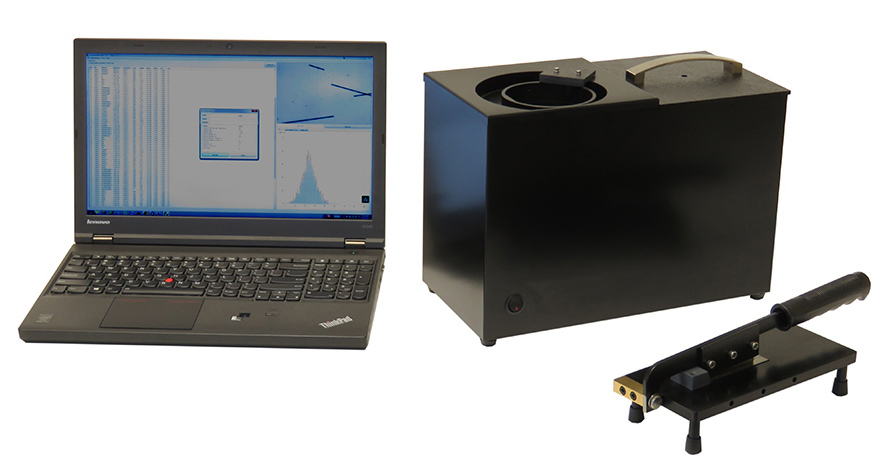Simplifying Measurements with a High-Accuracy Optical Fibre Diameter Analyser
Simplifying Measurements with a High-Accuracy Optical Fibre Diameter Analyser
Blog Article
Enhance Your Fiber Optic Projects With an Efficient Diameter Analyser
The combination of an effective diameter analyser into fiber optic jobs works as an essential aspect in accomplishing accuracy and consistency. By assisting in precise diameter measurements, these analysers not just enhance the high quality of installations but additionally minimize possible compatibility problems amongst components. In addition, the innovative abilities of modern-day analysers simplify data collection and quality control processes. As we explore the critical features and advantages of these tools, it ends up being obvious exactly how they can transform project results and make certain adherence to market criteria. What remains to be gone over is how to effectively execute these analysers in your existing process.
Relevance of Diameter Measurement
Determining the size of fibre optic cables is a crucial job that makes sure ideal performance and reliability in communication systems. Precise diameter measurement is necessary for numerous factors, mainly for keeping signal honesty and reducing loss. A wire's size straight influences its capability to send light properly; inconsistencies from the defined size can cause increased depletion, which influences the overall performance of the network.
Furthermore, exact measurement is vital during the setup and upkeep of fibre optic systems. An improper fit between cables and connectors can lead to signal degradation or complete failing of communication links. By making certain that diameters are within specified resistances, technicians can boost compatibility between elements, leading to enhanced system reliability.
In enhancement, size dimension plays a considerable function in high quality control throughout production. Consistency in the size of fiber optic cable televisions is crucial for ensuring uniform performance throughout different batches. optical fibre diameter analyser. This consistency helps producers maintain market requirements and fosters self-confidence amongst end-users
Attributes of an Efficient Analyser
An effective analyser for fibre optic jobs should incorporate a number of key functions that enhance precision and functionality in diameter dimension. High-resolution optical sensors are necessary for specific size readings, enabling customers to spot even the least variants in fibre thickness. These sensors must be matched by sophisticated calibration systems, ensuring consistent efficiency throughout different conditions and products.
Second of all, an user-friendly user interface is vital for promoting ease of procedure. This consists of instinctive software application that permits smooth information input and outcome, along with graphes of the measurements taken. A mobile design enhances functionality in numerous area atmospheres, making it less complicated to carry out assessments on-site.
Furthermore, the analyser needs to support numerous measurement settings, fitting various fibre kinds and applications. The ability to store and get historical data is another essential function, permitting customers to track performance with time and make informed decisions.
Benefits for Fiber Optic Projects
Applying a size analyser in fiber optic jobs provides read significant advantages that dramatically enhance task performance and quality. One of the key advantages is the ability to ensure specific measurements of fibre diameter, which is crucial for maintaining optimum performance in fibre optic systems. Accurate size readings assist in the identification of variances that can cause signify destruction or loss, thus making certain high-grade transmission.
Furthermore, making use of a diameter analyser improves the quality assurance procedure. By automating measurement tasks, project groups can lower the time invested in manual examinations, causing faster project conclusion and reduced labour expenses. This efficiency likewise permits even more extensive testing my link methods, leading to enhanced product integrity.
Moreover, uniformity in fibre size measurements advertises compatibility with various other fibre optic parts, lessening the threat of installment errors and boosting total system efficiency. The incorporation of a size analyser not just help in maintaining market requirements but likewise fosters confidence in task deliverables.
Assimilation Into Existing Operations
Incorporating a diameter analyser right into existing process can substantially boost the functional performance of fibre optic jobs. By flawlessly including this modern technology, groups can attain specific measurements that are crucial to preserving the integrity and performance of fiber optic systems. This combination allows for real-time information collection and evaluation, which can be crucial during the manufacturing and installment stages.
Furthermore, the capacity to automate diameter measurement processes decreases the potential for human mistake, guaranteeing constant high quality control throughout the project lifecycle. The data produced can be conveniently shared throughout platforms, helping with collaboration amongst engineers, specialists, and project managers. This ease of access boosts decision-making and speeds up job timelines.

Choosing the Right Size Analyser
When selecting a diameter analyser for fibre optic jobs, it is necessary to take into consideration numerous crucial factors that straight effect measurement accuracy and functional efficiency. First, the resolution and precision of the analyser need to straighten with the specific requirements of your task. Higher resolution tools can spot minute variations in size, which is crucial for making certain ideal efficiency in fibre optic systems.
Following, examine the rate of dimension. For tasks with tight target dates, a size analyser that uses quick data procurement can considerably improve productivity. In addition, take into consideration the analyser's compatibility with existing systems and software. A seamless combination lowers setup time and decreases disruptions during operations.
One more vital factor is the variety of diameters the analyser can fit. By carefully reviewing these variables, you can select a size analyser that improves the effectiveness and precision of your fibre optic tasks.
Verdict
In conclusion, the assimilation of an effective diameter analyser is paramount for improving fibre optic jobs. Specific diameter measurements make sure ideal performance and dependability while decreasing installment mistakes (optical fibre diameter analyser).
A wire's size directly influences its ability to transfer light effectively; deviations from the defined diameter can lead to enhanced depletion, which affects the general performance of the network.

Report this page